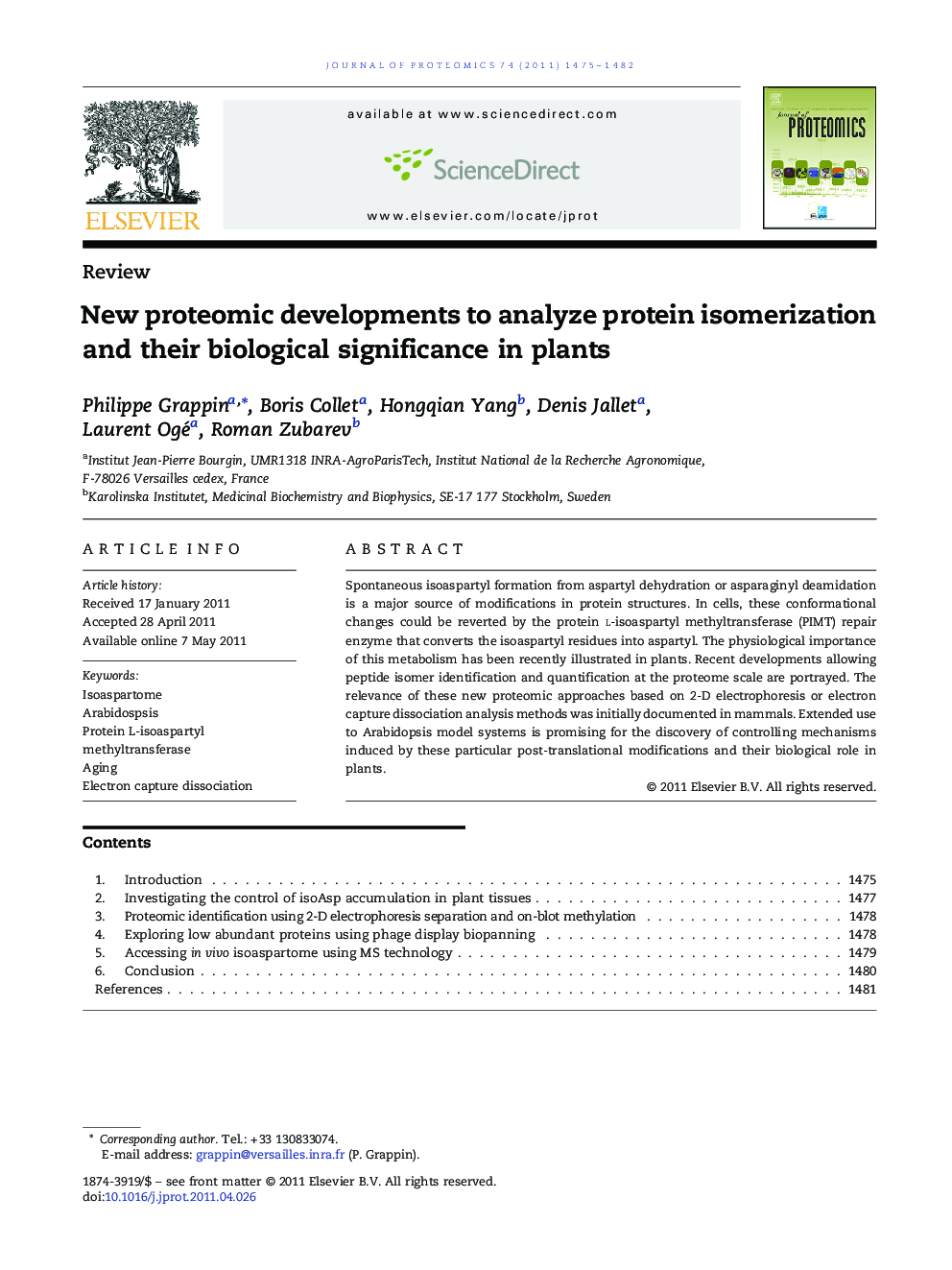| کد مقاله | کد نشریه | سال انتشار | مقاله انگلیسی | نسخه تمام متن |
|---|---|---|---|---|
| 1225813 | 968253 | 2011 | 8 صفحه PDF | دانلود رایگان |

Spontaneous isoaspartyl formation from aspartyl dehydration or asparaginyl deamidation is a major source of modifications in protein structures. In cells, these conformational changes could be reverted by the protein l-isoaspartyl methyltransferase (PIMT) repair enzyme that converts the isoaspartyl residues into aspartyl. The physiological importance of this metabolism has been recently illustrated in plants. Recent developments allowing peptide isomer identification and quantification at the proteome scale are portrayed. The relevance of these new proteomic approaches based on 2-D electrophoresis or electron capture dissociation analysis methods was initially documented in mammals. Extended use to Arabidopsis model systems is promising for the discovery of controlling mechanisms induced by these particular post-translational modifications and their biological role in plants.
Graphical AbstractRecent developments in mass spectrometry allowing peptide isomer identification at the proteome scale are promising to characterize the physiological importance of isoaspartyl residues formation and of their conversion into aspartyl in plants.Figure optionsDownload high-quality image (26 K)Download as PowerPoint slide
Journal: Journal of Proteomics - Volume 74, Issue 8, 12 August 2011, Pages 1475–1482